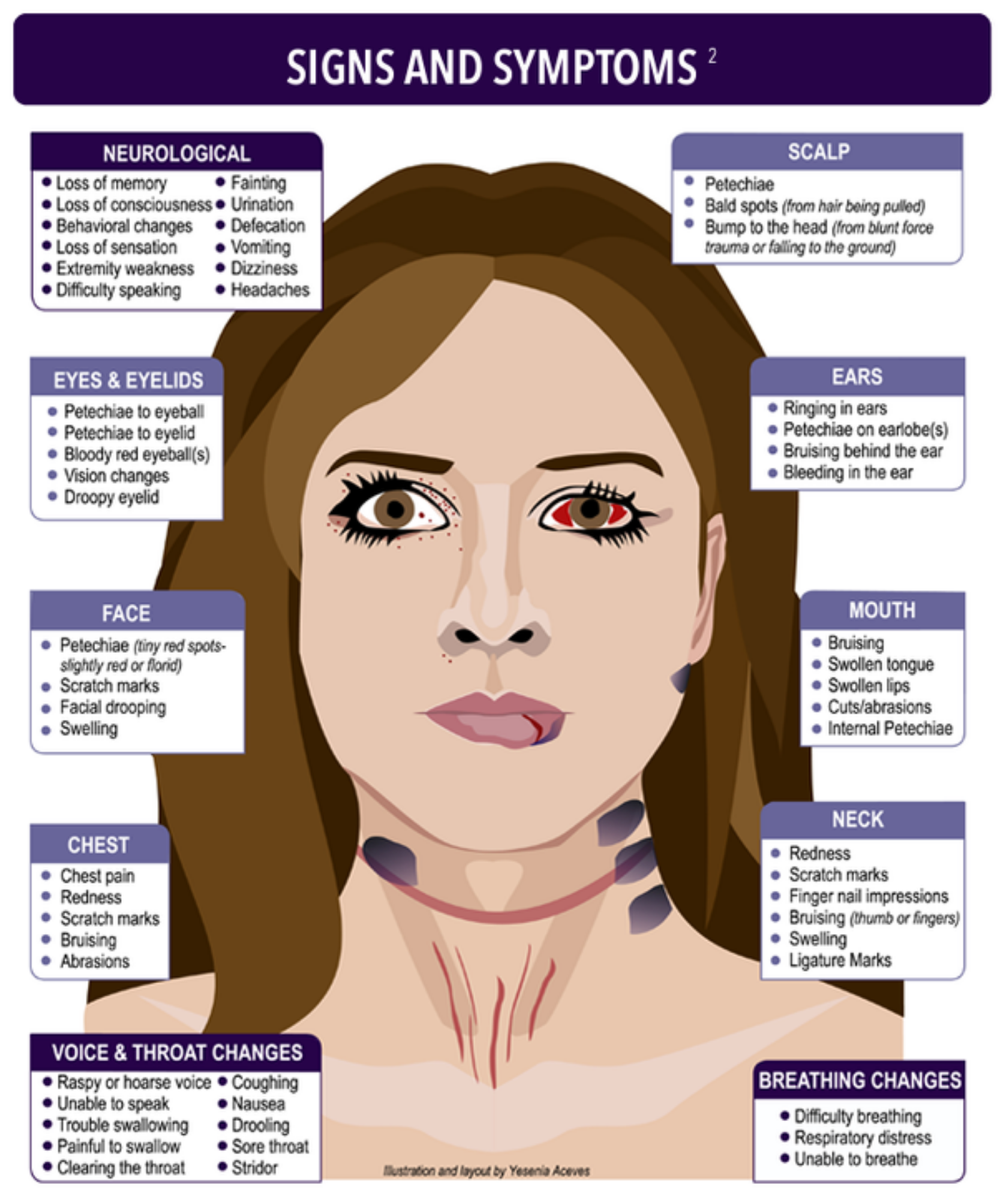Strangulation Can Lead to Death
Please seek immediate medical attention if you have experienced strangulation!
“When domestic violence perpetrators strangle (“choke”) their victims, not only is this a felonious assault, but it may be an attempted homicide. Strangulation is an ultimate form of power and control, where the batterer can demonstrate control over the victim’s next breath; having devastating psychological effects or a potentially fatal outcome.”
(Alliance for HOPE International)
Source: Strangulation in Intimate Partner Violence, Chapter 16, Intimate Partner Violence. Oxford University Press, Inc. 2009.
“The City of Albuquerque gratefully acknowledges Alliance for HOPE International, and Yesenia Aceves, for allowing us to reproduce, in part or in whole, the Signs and Symptoms of Strangulation.”
The first 24 to 72 hours after strangulation are the most critical.
Reporting and seeking help could save your life.
Find additional information from the Training Institute on Strangulation Prevention.
Signs and Symptoms
Neurological
- Loss of memory
- Loss of consciousness
- Behavioral changes
- Loss of sensation
- Extremity weakness
- Difficulty speaking
- Fainting
- Urination
- Defecation
- Vomiting
- Dizziness
- Headaches
Scalp
- Petechiae
- Bald spots (from hair being pulled)
- Bump to the head (from blunt force trauma or falling to the ground)
Eyes & Eyelids
- Petechiae to eyeball
- Petechiae to eyelid
- Bloody red eyeball(s)
- Vision changes
- Droopy eyelid
Ears
- Ringing in ears
- Petechiae on earlobe(s)
- Bruising behind the ear
- Bleeding in the ear
Face
- Petechiae (tiny red spots-slightly red or florid)
- Scratch marks
- Facial drooping
- Swelling
Mouth
- Bruising
- Swollen tongue
- Swollen lips
- Cuts/abrasions
- Internal Petechiae
Chest
- Chest pain
- Redness
- Scratch marks
- Bruising
- Abrasions
Neck
- Redness
- Scratch marks
- Finger nail impressions
- Bruising (thumb or fingers)
- Swelling
- Ligature Marks
Voice & Throat Changes
- Raspy or hoarse voice
- Unable to speak
- Trouble swallowing
- Painful to swallow
- Clearing the throat
- Coughing
- Nausea
- Drooling
- Sore throat
- Stridor
Breathing Changes
- Difficulty breathing
- Respiratory distress
- Unable to breathe
Facts
- Loss of consciousness can occur within 5-10 seconds
- Death can occur in minutes
- You do not have to lose consciousness or have physical injuries for strangulation to be dangerous
- In 50% of cases, you cannot see any external signs ofinjury; even in fatalities
- Can have long term consequences

